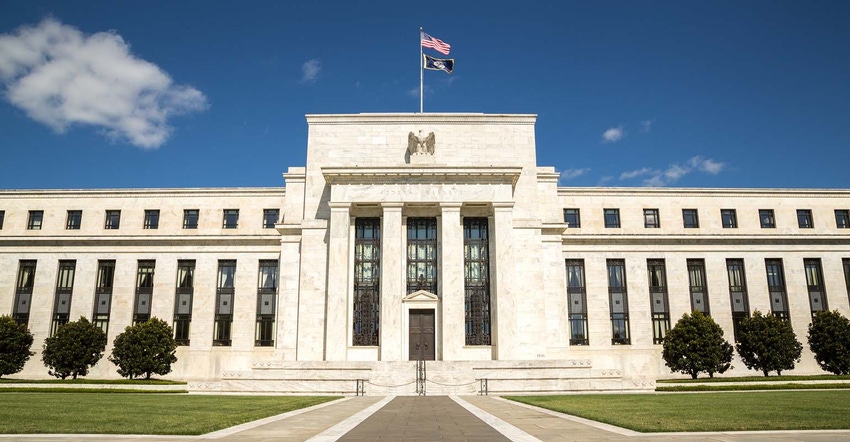November 21, 2018

Farmland values are up 1% in third quarter 2018 compared to third quarter 2017 in the Seventh Federal Reserve District, according to the AgLetter.
The 188 agricultural bankers who responded to the Oct. 1 survey indicated district farmland values were 1% lower in the third quarter of 2018 than in the second quarter. This was the first quarterly decline since fourth quarter 2016.
Almost two-thirds of survey respondents expected the district’s farmland values to be stable during the fourth quarter 2018, but 32% expected a decrease in the final quarter of 2018. Only 2% expect an increase.
Credit conditions
Agricultural credit conditions for the district deteriorated in the 2018 third quarter. It marked the fifth quarter in a row that the availability of funds for lending by agricultural banks was down relative to a year earlier.
The demand for non-real estate farm loans was higher than a year earlier in third quarter 2018. These results helped explain how the average loan-to-deposit ratio for the district established a new record of 79.4%.
Repayment rates for non-real estate farm loans were lower in the third quarter 2018 relative to the same quarter last year, and loan renewals and extensions were higher.
Average interest rates on agricultural loans moved up some during third quarter 2018.
Farmland values
District farmland values saw a year-over-year increase of 1% in the 2018 third quarter. The district didn’t experience a year-over-year decrease or increase in its agricultural land values greater than 1% for the eighth consecutive quarter.
The latest results were in line with recent trends. While nominal farmland values had remained fairly stable during the past few years, real farmland values had been eroding since the third quarter of 2014.
Agricultural land values would have experienced more downward pressure in the absence of exceptional crop yields.
In 2018, districtwide corn and soybean yields jumped to all-time highs, 198 bushels per acre for corn and 59 bushels per acre for soybeans.
Commodity prices
For third quarter 2018, corn prices were 1.9% higher than a year ago, based on USDA data. Soybean prices were 5.6% lower than a year earlier. USDA revised its price estimates for the 2018-19 crop year to a range of $3.20 to $4 per bushel for corn and a range of $7.60 to $9.60 per bushel for soybeans.
Key livestock prices were lower in the third quarter of 2018 relative to the same quarter last year. Compared with a year earlier, cattle prices were down 2.6%, hog prices were down 17% and milk prices were down 9.8%.
Credit conditions
The availability of funds for lending by agricultural banks was lower than a year earlier for the fifth quarter in a row.
For the July through September period of 2018, repayment rates on non-real estate farm loans were lower than a year ago. The index of loan repayment rates was 63 in the third quarter of 2018, as 2% of responding bankers observed higher rates of loan repayment relative to a year ago and 39% observed lower rates.
Loan renewals and extensions on non-real estate agricultural loans were higher in the third quarter of 2018 relative to the same quarter of 2017, with 43% of the responding bankers reporting more of them.
Collateral requirements for loans in the third quarter of 2018 tightened relative to the same quarter of 2018, as 25% of the respondents reported their banks required more collateral and none reported their banks required less.
As of Oct. 1, 2018, the district’s average interest rates on new operating loans had risen to 5.86%, feeder cattle loans to 5.93% and farm real estate loans to 5.46%.
Farmland values
Nearly two-thirds of survey respondents predicted farmland values to be stable in the fourth quarter of 2018, while 32% of responding bankers expected farmland values to decrease in the October through December period of 2018 and just 2% expected farmland values to increase.
Overall, 26% of responding bankers forecast an increase in the volume of farmland transfers relative to the fall and winter of a year ago and 21% forecast a decrease.
Crop earnings
Only 5% of respondents anticipated crop net cash earnings to rise over the next three to six months relative to a year ago, while 82% anticipated these earnings to fall.
Forced sales
Respondents expect an increase in forced sales or liquidations of farm assets by financially distressed farmers.
About the Author(s)
You May Also Like




